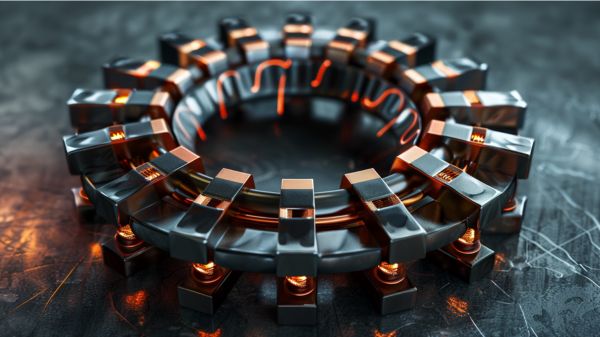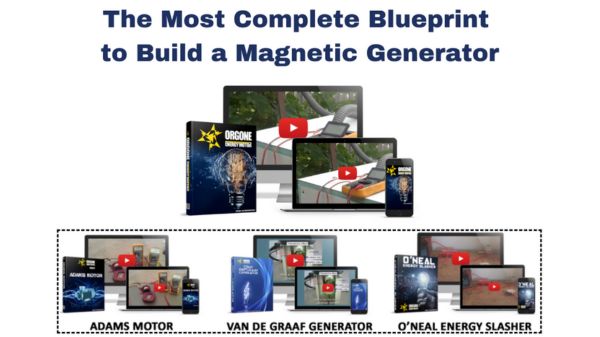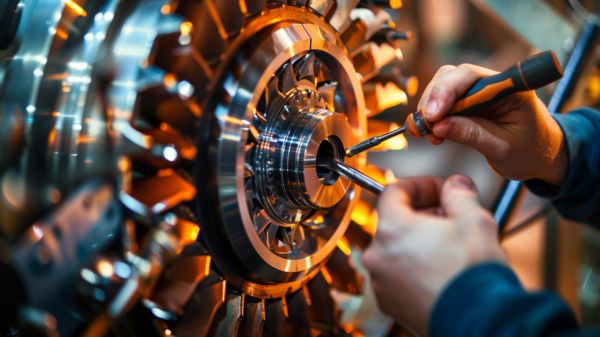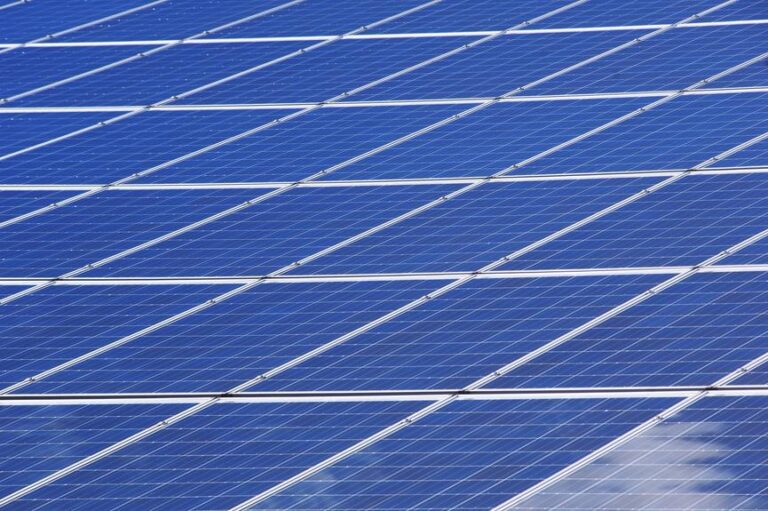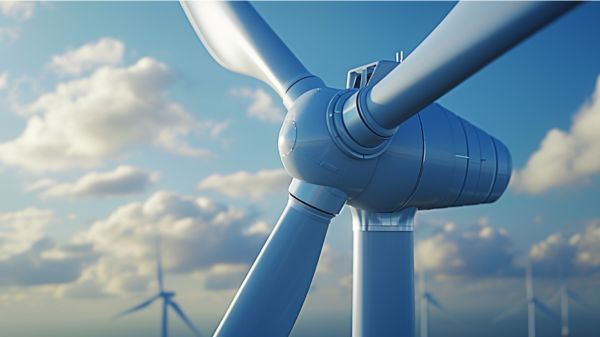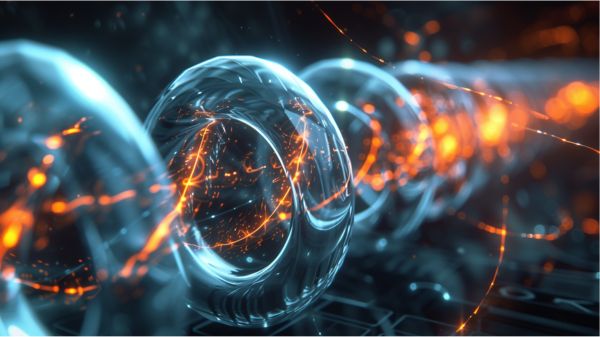What Makes Permanent Magnet Generators Efficient?
Are you curious about what makes permanent magnet generators (PMGs) so efficient? Well, let’s take a closer look. It’s not just one factor that contributes to its efficiency, but a combination of key elements working together. From the design and arrangement of the magnets to the type of materials used, every aspect plays a role.
The efficiency of the coil winding, the size and weight of the generator, and the control and optimization of the magnetic field also come into play. And that’s not all – the reduction of losses in the generator components is another crucial factor.
So, if you want to uncover the secrets behind the efficiency of PMGs, keep on reading.
Key Takeaways
- Optimization of magnet design and arrangement eliminates rotor losses and ensures high power generation.
- Proper coil winding minimizes resistance and maximizes energy conversion, improving generator efficiency.
- Efficient coil winding design maximizes magnetic flux linkage and minimizes energy losses.
- Permanent magnet generators are smaller, lighter, and offer high performance and efficiency in power generation.
Magnet Design and Arrangement
In optimizing the efficiency of permanent magnet generators, magnet design and arrangement play a crucial role by virtually eliminating rotor losses and enhancing power generation. The efficient magnet design ensures high efficiency and reliable power generation.
The arrangement of magnets creates a magnetic field that induces electromotive force, leading to efficient power generation. By carefully designing and arranging the magnets, energy losses are minimized, resulting in highly efficient power generation. The magnet design and arrangement in permanent magnet generators are critical factors in achieving efficient power generation.
These generators have a simple synchronous generator form with no rotor connections, which further enhances their efficiency. With the right magnet design and arrangement, permanent magnet generators offer a reliable and efficient solution for various industrial and renewable energy applications.
Type of Materials Used
The choice of materials used in permanent magnet generators greatly impacts their efficiency, cost, and performance. When selecting the materials for a permanent magnet generator, there are several options to consider.
- Neodymium: Neodymium magnets offer high magnetic strength, making them ideal for applications that require strong magnetic fields.
- Samarium-Cobalt: Samarium-cobalt magnets provide excellent resistance to corrosion, making them suitable for environments where moisture or other corrosive elements are present.
- Ferrite: Ferrite magnets are cost-effective and are often used in applications that operate at lower temperatures.
- Aluminum-Nickel-Cobalt: Aluminum-nickel-cobalt magnets offer high resistance to demagnetization and thermal stability, making them suitable for applications that require long-term reliability.
The choice of material for a permanent magnet generator should be based on the specific requirements of the application, considering factors such as desired magnetic strength, corrosion resistance, cost, and temperature conditions. By selecting the appropriate material, the efficiency, cost-effectiveness, and overall performance of the generator can be optimized.
Efficiency of the Coil Winding
To optimize the efficiency of the coil winding in a permanent magnet generator, there are several key points to consider.
- First, the coil winding technique should be carefully chosen to minimize resistance and maximize energy conversion.
- Second, selecting the appropriate wire gauge is crucial in reducing power losses and improving overall efficiency.
- Lastly, optimizing the magnetic field interaction through precise coil winding design ensures higher power generation efficiency.
Coil Winding Technique
Efficiency in permanent magnet generators can be significantly improved through the implementation of advanced coil winding techniques. Proper coil winding techniques play a crucial role in enhancing the overall efficiency of the generator. Here are five key benefits of using advanced coil winding techniques:
- Reduced resistance: Precision in coil winding minimizes resistance, resulting in lower power losses and improved efficiency.
- Minimized eddy current losses: Advanced winding methods help to minimize eddy current losses, which can otherwise lead to energy wastage.
- Optimal magnetic field interactions: Well-designed coil winding ensures optimal magnetic field interactions, maximizing the electrical output of the generator.
- Improved power density: Advanced coil winding techniques contribute to higher power density, allowing for more power output in a compact design.
- Enhanced reliability: Properly wound coils contribute significantly to the overall efficiency and reliability of the generator, ensuring consistent and reliable power generation.
Wire Gauge Selection
When selecting the appropriate wire gauge for coil winding in a permanent magnet generator, maximizing efficiency becomes a critical consideration. The wire gauge directly affects the resistance of the coils, which in turn impacts the overall electrical losses in the generator system.
Thicker wire gauges reduce electrical resistance, leading to lower energy losses and higher efficiency in the generator. Optimal wire gauge selection ensures the coils have the necessary current carrying capacity and minimizes heat dissipation, enhancing the overall performance of the generator.
By using the right wire gauge, you can improve the power output and operational effectiveness of the permanent magnet generator. Take a look at the table below to see the relationship between wire gauge, current carrying capacity, and efficiency:
| Wire Gauge | Current Carrying Capacity | Efficiency |
|---|---|---|
| Thicker | Higher | Higher |
| Thinner | Lower | Lower |
Magnetic Field Optimization
Optimizing the magnetic field in a permanent magnet generator is essential for maximizing the efficiency of the coil winding. Efficient coil winding design ensures maximum magnetic flux linkage for higher power output.
By properly optimizing the magnetic field, energy losses can be reduced, resulting in improved overall generator performance. Effective coil winding layouts minimize resistance and maximize electromagnetic induction, allowing for efficient conversion of mechanical energy into electrical energy.
The efficiency of the coil winding directly impacts the generator’s ability to generate power, making magnetic field optimization a crucial factor in achieving high generator performance. By carefully considering the design and arrangement of the coil winding, it’s possible to enhance the efficiency of the generator and maximize its power output.
Generator Size and Weight
When considering generator size and weight, it’s important to understand the correlation between size and efficiency, as well as weight and performance.
Permanent magnet generators offer the advantage of being smaller and lighter while still maintaining high power output. This compactness not only makes them suitable for applications with limited space, but also contributes to easier transportation and installation, ultimately leading to improved overall efficiency and performance in various environments.
Size and Efficiency
Permanent magnet generators offer significant advantages in terms of size and efficiency, particularly in relation to generator size and weight. Here are five key points that emphasize the benefits:
- Smaller and lighter: Permanent magnet generators are smaller and lighter for the same power output compared to traditional generators. This enhances portability and installation flexibility.
- Easier transportation and handling: The reduced size and weight of permanent magnet generators contribute to easier transportation and handling during installation and maintenance.
- Cost savings: Lighter permanent magnet generators require less structural support, leading to cost savings in construction and infrastructure.
- Compact installations: The smaller generator size allows for more compact installations in constrained spaces or applications with limited footprint requirements.
- Improved overall system performance: Efficiency gains from smaller, lighter permanent magnet generators translate to improved overall system performance and energy output.
With these advantages, permanent magnet generators provide efficient power solutions that are both practical and effective.
Weight and Performance
To achieve optimal performance and efficiency in power generation, the weight and size of a generator play a crucial role. Permanent magnet generators offer a compact and lightweight solution without compromising on performance. Their reduced weight makes them easier to transport and install in various applications, allowing for more flexibility in placement.
Despite their smaller size, permanent magnet generators maintain high performance levels and efficiency in generating electricity. The compact nature of these generators not only contributes to their lightweight design but also makes maintenance and handling during installation and operation more convenient.
With their smaller footprint, permanent magnet generators offer a more efficient use of space while delivering the same output power as traditional generators. So, if you desire liberation from bulky and heavy generators, consider the compact and efficient permanent magnet generator.
Control and Optimization of Magnetic Field
Efficiently optimizing the magnetic field strength is crucial for maximizing power generation in permanent magnet generators. Control systems play a vital role in regulating the magnetic field to enhance efficiency and performance.
By precisely controlling the magnetic field, energy losses can be minimized, resulting in improved overall generator efficiency. This optimization ensures optimal power output even under varying load conditions. Magnetic field control is essential to achieve high efficiency and reliability in permanent magnet generators.
Key points to consider for magnetic field optimization in permanent magnet generators are:
- Control systems: Utilize advanced control systems to regulate and adjust the magnetic field strength.
- Energy losses: Minimize energy losses by optimizing the magnetic field to reduce magnetic hysteresis and eddy current losses.
- Power generation: Enhance power generation by precisely controlling the magnetic field to maximize magnetic flux linkage.
- Performance: Improve generator performance by adjusting the magnetic field to optimize torque and power output.
- Load conditions: Adapt the magnetic field strength to varying load conditions for efficient and reliable operation.
Reduction of Losses in the Generator Components
To enhance the overall efficiency of permanent magnet generators, reducing losses in the components is a crucial aspect that should be carefully addressed. Permanent magnet generators achieve high efficiency by optimizing the magnetic circuit design to reduce core losses in the stator and rotor components.
By eliminating the need for rotor current, copper losses in the rotor are minimized. Stator-side losses are also minimized through optimized power factor and reduced resistive losses. Additionally, the absence of rotor losses in permanent magnet generators contributes to overall efficiency by minimizing energy dissipation.
Furthermore, the elimination of slip rings and brushes reduces maintenance costs associated with these components. By focusing on reducing losses in the generator components, permanent magnet generators offer a high level of efficiency, thereby benefiting the user with lower energy consumption and reduced maintenance costs.
| Component | Losses Reduced |
|---|---|
| Rotor | Elimination of rotor losses |
| Stator | Minimized resistive losses |
| Core | Reduced core losses |
| Slip rings/brushes | Elimination of maintenance costs |
Frequently Asked Questions
Why Are Permanent Magnet Motors More Efficient?
Permanent magnet motors are more efficient due to their strong magnetic field, efficient energy conversion, high power output, and low losses. Their superior electrical conductivity, optimized rotor design, and absence of magnetization processes contribute to their increased efficiency.
What Are the Advantages of a Permanent Magnet Generator?
A permanent magnet generator offers a cost-effective solution with increased power output, reliability, durability, low maintenance requirements, compact and lightweight design, environmentally friendly energy generation, and versatile applications in various industries.
Are Magnetic Generators Efficient?
Magnetic generators are efficient, with permanent magnet generators offering up to 98% efficiency. Factors like magnet strength and temperature impact efficiency. Advancements in technology have led to improved efficiency and reliability.
Why Not Use Permanent Magnet on Generator?
Using permanent magnets on generators may not be suitable due to disadvantages such as high cost, limited temperature tolerance, and maintenance requirements. Alternatives like induction generators are preferred in certain industries for cost and operational considerations.
Conclusion
The efficiency of Permanent Magnet Generators (PMGs) is a result of various factors such as magnet design, choice of materials, coil winding efficiency, generator size and weight, and control of the magnetic field.
By optimizing these aspects and reducing losses in the generator components, PMGs can achieve high efficiency rates.
As the saying goes, ‘Efficiency is the key that unlocks the door to success,’ and PMGs prove this by delivering consistent performance and longevity in power generation.
